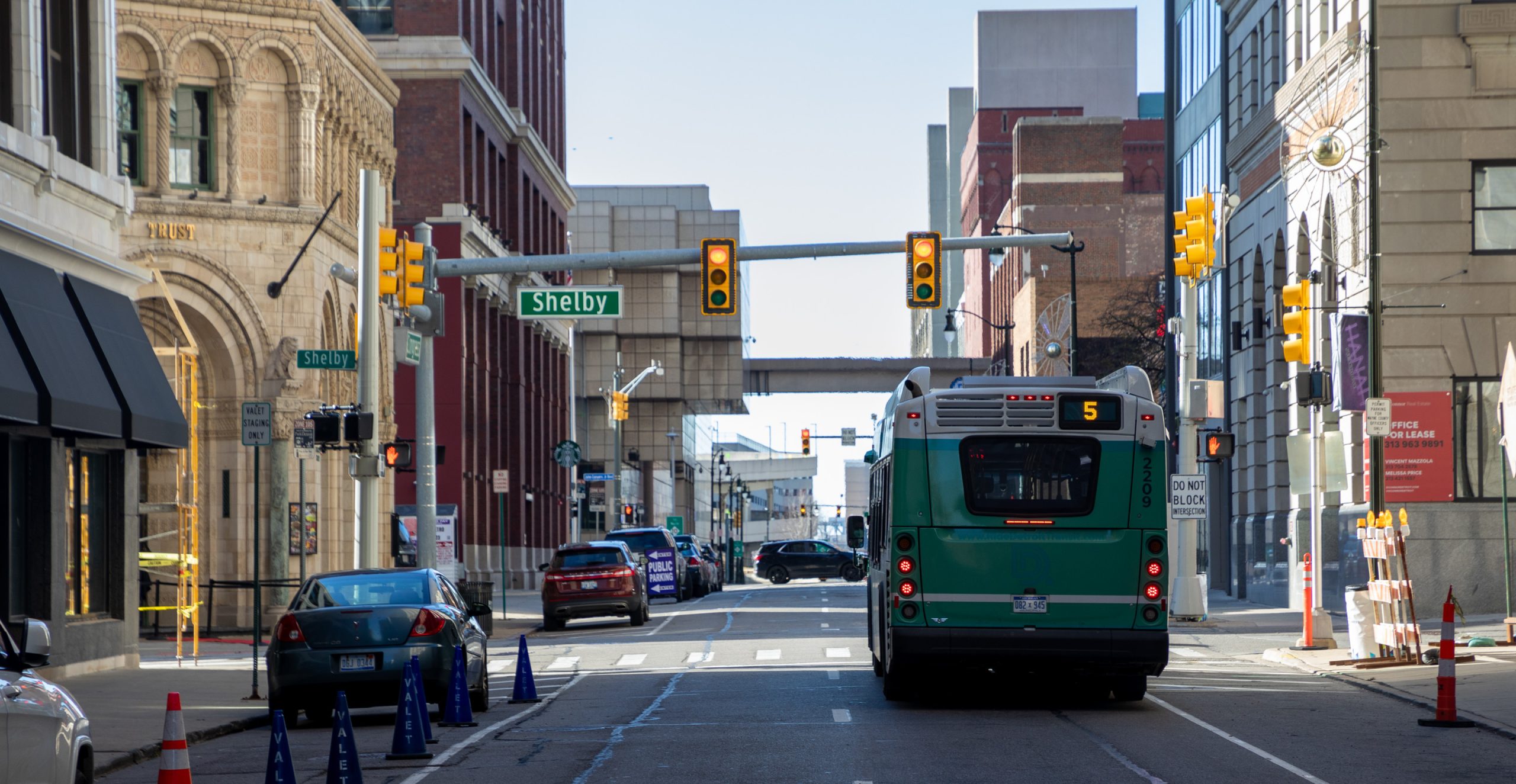With summer and rising temperatures, Detroiters looking to cool down might be on the lookout for pools, splash pads and water parks.
The Detroit Parks and Recreation Department’s Brennan Pool at Rouge Park is open during the summer. Open rec centers in the city with indoor pools are the Adams Butzel Complex, Heilmann, Northwest Activities Center and Patton. Wayne County’s Family Aquatic Center will be opening for the season in June in the Chandler Park neighborhood, and anyone can take a dip at Belle Isle Beach.
Public access to these places is now a given, but rec centers and “public” pools were explicitly off-limits to Black people in Detroit and across the U.S. alike.
This historical pool segregation has contributed to swimming-related public health issues that especially impact young Black people: The fatal drowning rate for Black children is far greater than that for white children — as much as 7.6 times higher for ages 10-14 — according to a 2021 study published by the U.S. Centers for Disease Control and Prevention.
After the Civil Rights Act of 1964 desegregated public facilities, Detroit’s recreation department still needed to get creative to help expand access to pools, and it did: Swimmobiles rolled out across the city starting in the late 1960s.
Racism in the water
As Detroit’s population boomed in the early part of the 20th century, many parklands in the city were privately owned. Then migration from the South resulted in a push for more recreation resources like playgrounds and parks. More Black residents contributed to the city’s growth, but a mix of racially restrictive covenants, discrimination by real estate agents, white hostility against integration and redlining kept Black residents segregated.
Segregation extended to parks and pools — many of Detroit’s existing pools prohibited Black residents from using them. The city also neglected existing recreational facilities in Black neighborhoods. Local branches of the YMCA and YWCA were also segregated.
In 1926, the Detroit Mayor’s Committee on Race Relations reported that the Department of Recreation was struggling to integrate indoor pools in particular.
About a decade later, Black activist Snow F. Grigsby distributed a pamphlet calling on the city to open more pools that could be enjoyed by all residents. He wrote, “What answer will the City Planning Commissioner give for having provided for the Recreation Commission several swimming pools and playgrounds in the last two years, but none of which are located in the community convenient for its colored citizens?”
Bringing pools and play to the neighborhood
By 1950, Detroit had six outdoor pools. Racial covenants were ruled unenforceable by the U.S. Supreme Court in 1948, but white residents continued resisting integration efforts. The city’s Supervisor of Swimming Pools ordered Rouge Park be desegregated in 1941, for example, but reports of discrimination continued until much later.
The suburbs offered little relief. The Crystal Pool, located off 8 Mile Road in Oak Park — only miles away from the historically Black 8 Mile-Wyoming Street neighborhood — prohibited Black swimmers. “Freedom swimmers” from the Congress of Racial Equality and the Detroit Brotherhood Youth Council picketed the pool in 1961 for continuing to discriminate, Michigan Chronicle reported at the time. Later that year, the owner closed it down and sold the land rather than integrate.
Then in 1968, local station WJBK-TV gifted Detroit a swimmobile — a portable pool on wheels. The Parks and Recreation Department operated the swimmobile, and it traveled across the city to schools, playgrounds and recreation centers.
Swimmobiles accompanied a range of portable activities in the department’s mobile unit. “Playmobiles” brought playgrounds into neighborhoods over a decade before swimmobiles emerged and were complete with swing sets, merry-go-rounds and other play equipment. “Naturemobiles” brought small animals and a pony cart to playgrounds and museums to educate children about animals and plants.
“Gamemobiles” brought twice the fun, including a pipe that turned fire hydrants into street showers and doubled as stages for musicians to play concerts several days a week.
The city’s mobile unit was a hit among children and families alike.
The city had six swimmobiles at the program’s peak in 1979, but financial issues set in by the early 1980s. By 1982, the Parks and Recreation Department could eventually only afford to use four swimmobiles, and it cut the program back from an 18-week run time every summer to six weeks.
“In a lot of areas, this is the only water recreation,” Michael White told the Free Press in 1982 as he supervised a swimmobile. “They’re lined up in the street when we show up.”
Swimmobiles were gone by the late 1990s. Budget struggles and maintenance issues finally led to the demise of the swimmobile and mobile unit. The maintenance of city parks also suffered.
Metro Detroit had 1,200 outdoor pools defined as “public” in 2015, but more than 90% of these pools restricted access to some degree like residency requirements or membership fees.
Prospects are looking up for those hoping to cool down. In the last 10 years, Detroit has built, renovated or upgraded 160 parks. Splash pads are included in many of these renovations, including at Riverside Park, Palmer Park, Clark Park and Mt. Elliot Park, offering ways for children to cool down and play.
Outdoor swimmers might enjoy the waters of Belle Isle Beach, though it’s important to watch out for closures and bacteria spikes after heavy rain.
Initiatives have emerged to address the disparity in swim lessons, like the YMCA of Metropolitan Detroit’s Detroit Swims program, which provides free swimming lessons. Huron-Clinton Metroparks is raising money to expand its Everyone in the Pool program, which partnered with the City of Detroit in 2021 to offer free swimming lessons. Applications for this summer’s program open Friday.




